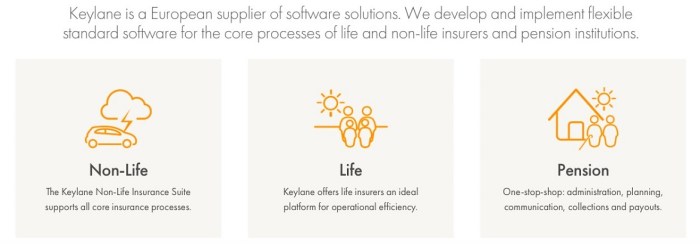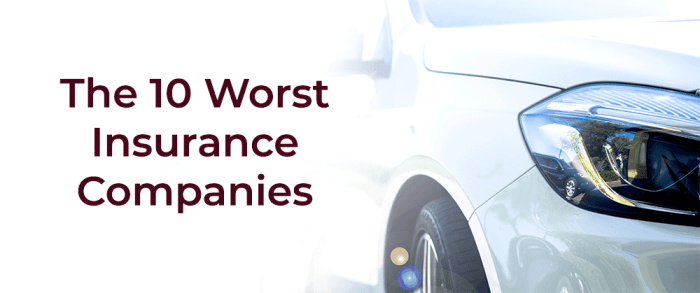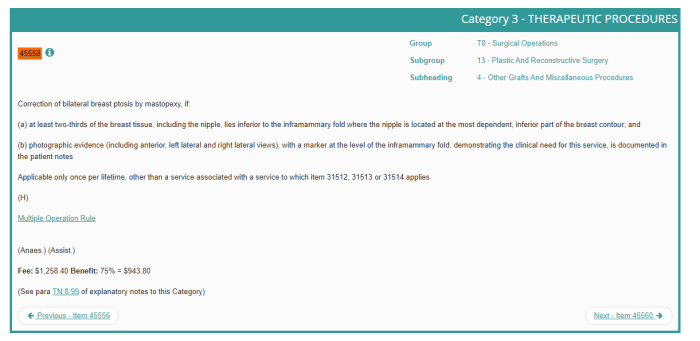Navigating the Maze: Gold Coast Schools Insurance
Securing the future of Gold Coast schools demands a robust insurance strategy. Beyond basic coverage, the complexities of policy types, risk assessments, and evolving threats like cyberattacks require careful navigation. This deep dive explores the multifaceted world of Gold Coast schools insurance, examining the crucial factors that determine cost, coverage, and compliance. From property damage and liability to employee benefits and cybersecurity, we analyze the spectrum of insurance options available to schools in the region. Understanding these intricacies empowers educators to make informed decisions, protecting both their students and their institutions. Types of School Insurance on the Gold Coast Securing comprehensive insurance is paramount for Gold Coast schools, safeguarding against a range of potential risks. The diverse needs of educational institutions necessitate a multifaceted approach to risk management, leading to a variety of insurance policies available. Understanding these options is crucial for effective financial protection and operational continuity. Public Liability Insurance Public liability insurance protects schools against claims arising from injuries or property damage caused to third parties on school grounds or as a result of school activities. This is a cornerstone policy for all Gold Coast schools, covering incidents ranging from playground accidents to slips and falls in school buildings. Coverage amounts vary significantly between providers, influencing premium costs. Schools with extensive outdoor facilities or high student numbers may require higher coverage limits. A typical policy would cover legal costs, compensation payments, and other expenses associated with defending a claim. Professional Indemnity Insurance This policy safeguards schools against claims of negligence or professional misconduct by staff. Examples include allegations of teacher malpractice, inadequate supervision, or breaches of duty of care. Professional indemnity insurance is particularly vital for schools facing potential legal challenges related to teaching practices, student discipline, or administrative decisions. The level of coverage required depends on the school’s size, the number of staff, and the specific nature of its operations. Claims can be costly, making adequate insurance essential. Property Insurance Property insurance covers damage or loss to school buildings, contents, and other assets. This includes protection against events like fire, theft, vandalism, and natural disasters such as floods and cyclones, prevalent in coastal regions like the Gold Coast. The policy usually covers the cost of repairs or replacement of damaged property. Schools should carefully assess their assets and choose a policy with adequate coverage to reflect their property value and potential risks. Factors such as building materials, security systems, and location influence premium calculations. Workers’ Compensation Insurance This insurance covers medical expenses and lost wages for staff who are injured or become ill as a result of their work at the school. It’s a mandatory insurance requirement in most Australian jurisdictions, including Queensland where the Gold Coast is located. Coverage includes medical treatment, rehabilitation, and compensation for lost income. Schools must ensure they comply with all relevant legislation regarding workers’ compensation and maintain appropriate safety procedures to minimize workplace accidents. Premiums are usually calculated based on factors such as the school’s payroll and the nature of the work performed by its staff. Cyber Liability Insurance With the increasing reliance on technology, cyber liability insurance is becoming increasingly important for schools. This protects against financial losses resulting from data breaches, cyberattacks, and other cybersecurity incidents. Given the sensitive nature of student data, schools need to safeguard against potential breaches and the associated legal and financial ramifications. Policies typically cover costs associated with data recovery, notification of affected individuals, legal fees, and public relations expenses. The specific coverage offered will vary depending on the insurer and the school’s specific needs. Comparison of Providers Several insurance providers cater to Gold Coast schools, offering varying coverage options and premium structures. Direct comparisons require reviewing individual policy documents and obtaining quotes from multiple providers. Factors such as claims history, risk assessment, and the specific needs of the school influence the pricing and coverage offered by different insurers. It’s crucial to compare not only the premium cost but also the breadth and depth of coverage offered to ensure adequate protection. Consider seeking advice from an independent insurance broker to navigate the options and secure the most suitable policy. Factors Affecting Insurance Costs Securing comprehensive school insurance on the Gold Coast involves a multifaceted assessment of risk, leading to premiums that vary significantly between institutions. Several key factors contribute to the final cost, impacting budgeting and financial planning for schools. Understanding these factors empowers schools to make informed decisions about their insurance coverage and potentially mitigate costs.School insurance premiums on the Gold Coast are influenced by a complex interplay of factors, ultimately reflecting the insurer’s assessment of potential liabilities. These factors are not always easily quantifiable, requiring sophisticated risk assessment models. This analysis will illuminate the key drivers of cost variation in the Gold Coast school insurance market. School Size and Infrastructure Larger schools generally command higher premiums due to increased potential for incidents. A larger student population naturally increases the likelihood of accidents, injuries, and property damage claims. Furthermore, the size and complexity of the school’s infrastructure – encompassing buildings, grounds, and equipment – directly correlates with the potential scope of damage and the associated repair costs. A sprawling campus with numerous buildings presents a greater insurance risk than a smaller, more compact facility. For example, a large high school with extensive sporting facilities will likely face higher premiums compared to a smaller primary school with limited grounds. Location and Geographic Risk The geographic location of a school significantly influences its insurance premium. Schools situated in areas prone to natural disasters, such as cyclones or floods, face considerably higher premiums to reflect the elevated risk of damage. Proximity to high-crime areas can also increase premiums, reflecting the potential for vandalism, theft, or other criminal activities. Similarly, schools located in areas with high traffic congestion may face higher premiums due to an increased risk of accidents involving vehicles on or near school property. A coastal school exposed to potential flooding would, for instance, have a substantially higher premium than an inland school in a low-risk area. Student Population and Activities The composition of the student population and the types of activities offered also impact insurance costs. Schools with a higher proportion of students participating in high-risk activities, such as sports with a high incidence of injury (e.g., rugby, football), will generally face higher premiums. The presence of specialized facilities, such as science labs or workshops, can also influence premiums, reflecting the potential for accidents and damage to equipment. A school with a robust extracurricular program, particularly one involving potentially hazardous activities, will likely face a higher premium than a school with a more limited program. Risk Assessment Methodologies Insurance companies employ sophisticated risk assessment methodologies to determine premiums. These methodologies involve a detailed analysis of various factors, including the school’s safety record, the effectiveness of its risk management procedures, and the presence of appropriate safety measures. Schools with a proven track record of safety and robust risk management protocols can often negotiate lower premiums. Conversely, schools with a history of incidents or inadequate safety measures may face significantly higher premiums. The use of advanced data analytics and predictive modeling plays a crucial role in refining these assessments and enabling more accurate pricing. A school implementing comprehensive safety training programs and regularly inspecting its facilities would likely benefit from a lower premium than a school with less stringent safety practices. Coverage for Specific Risks Gold Coast schools face a unique set of risks, necessitating comprehensive insurance coverage. Policies typically address property damage, liability claims, and student accidents, offering varying levels of protection depending on the specific policy and the school’s individual needs. Understanding these coverages is crucial for effective risk management and financial protection. Property Damage Coverage This aspect of school insurance covers physical damage to school buildings, facilities, and equipment. Coverage typically extends to damage caused by various perils, including fire, storms, vandalism, and accidental damage. For instance, a policy might cover the repair costs following a hailstorm that damages the school roof or the replacement of equipment destroyed in a fire. The extent of coverage often depends on factors such as the age and condition of the property, the policy’s deductible, and the specific perils included in the policy. Schools should ensure their policies adequately reflect the value of their assets and consider adding extensions for specific risks, like flood damage, if prevalent in their location. Liability Claims Coverage Liability insurance protects schools against financial losses resulting from legal claims arising from accidents or injuries on school property or during school-related activities. This includes claims from students, staff, visitors, or third parties. For example, a successful claim might arise from a visitor slipping and falling on a wet floor, resulting in injury and legal costs for the school. Policies typically cover legal defense costs, settlements, and judgments up to the policy’s limit. Maintaining thorough risk assessments, implementing safety protocols, and documenting all incidents are crucial in mitigating liability risks and keeping premiums manageable. Comprehensive risk management programs demonstrate proactive risk mitigation to insurers, often leading to favorable premium rates. Student Accident Coverage This coverage protects students against injuries sustained during school hours or school-sponsored events. Policies typically cover medical expenses, including hospitalization, surgery, and rehabilitation. For example, a student injured during a sports game at school would have their medical expenses covered under this aspect of the policy. The extent of coverage can vary widely, depending on the policy’s terms and conditions. Schools should ensure that their policies offer sufficient coverage for medical expenses and consider supplementary accident insurance options if necessary to provide more comprehensive protection for their students. Regular safety training for staff and students, coupled with well-maintained facilities, can significantly reduce the likelihood of accidents and associated claims. Choosing the Right Insurance Provider Selecting the appropriate insurance provider is crucial for Gold Coast schools. A poorly chosen insurer can lead to inadequate coverage, protracted claims processes, and ultimately, financial hardship. The decision requires careful consideration of several key factors, ensuring the school’s unique needs are met effectively and efficiently. Comparison of Gold Coast Insurance Providers Several insurance providers operate on the Gold Coast, each offering varying levels of service and possessing different reputations. A thorough comparison is essential. This involves researching the provider’s history, financial stability (indicated by ratings from agencies such as AM Best), claims handling efficiency (measured by customer reviews and industry reports), and the breadth of their coverage options specifically tailored to educational institutions. For example, one provider might excel in liability coverage, while another specializes in property insurance for school buildings and facilities. Schools should prioritize providers with a proven track record of successfully handling claims related to incidents common in school environments, such as sporting injuries or property damage. Key Criteria for Selecting a School Insurance Provider … Read more










